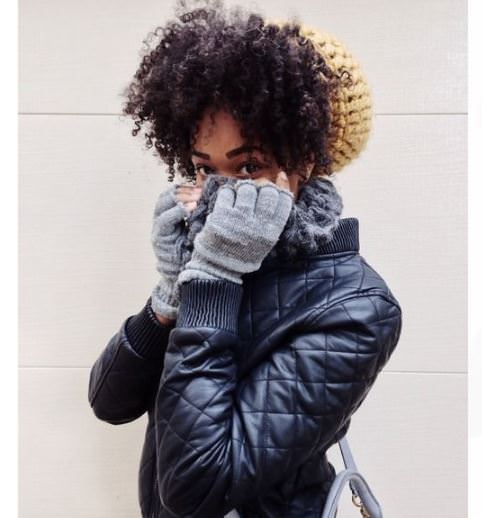How To Wear Winter Hats Without Sacrificing Hair Health
 Baby, it’s cold outside. The weather has changed and it’s safe to say that everyone is bundled up. Bundling up can mean more than just your body, it can also mean your head and your hair. The first thing we tend to do to keep warm is grab a hat and throw it over our head.
Baby, it’s cold outside. The weather has changed and it’s safe to say that everyone is bundled up. Bundling up can mean more than just your body, it can also mean your head and your hair. The first thing we tend to do to keep warm is grab a hat and throw it over our head.
Everybody wears hats, but in the colder months, we tend to go for hats because of necessity instead of aesthetics. That drives us toward the thicker and more durable hats. The ones that will actually keep us snug and cozy. And those hats are great for what they’re made for, but they can also be a little rough on our strands if we aren’t careful.
To keep your hair from breaking or matting under the stress of winter hats, there are a few things you need to keep in mind during these blustery months.
Prep
You need to prep your hair so that you can wear winter hats without sacrificing hair health. How you prep your hair for hats is very similar to how you would prep it for other things that could cause stress on your strands.
Keep in mind that moisture is key. Wool, thick knits, and felt can cause friction when rubbing against your hair. To avoid damage from that friction, you want to make sure that your strands are properly moisturized and smooth. Adding a little more moisturizer than usual is going to help tremendously.
Make sure the additional moisture you add is placed on top of your hair after you have finished styling it. Since the hat will sit atop your head, you want the outermost strands of your hair to be shellacked and smooth.
What’s good for the top of your hair is also excellent for your ends. The ends of your hair may be tied up and depending on your hair length and hair style, they may come into contact with the fabric of your hat. If the ends of your hair aren’t touching your hat, they may rub up against the fabric of your shirt. Shirts and sweaters tend to have the same impact on hair as hats. So, be mindful.
Keeping extra moisture on your strands is important, but don’t confuse it with over application of products. Product buildup is not good for your hair and it can be worsened when you consider that your hair strands will be under a hat for extended periods.
Getting rid of product buildup can be harsh on your hair. Add the necessary amount of products for protection, but don’t go overboard.
 Types of Hats
Types of Hats
Now that we know how to prep, we have to choose which type of hat to rock. There are so many to choose from. Finding the one that best suits your style is the easy part of things. Finding a hat that serves its purpose and fits your particular hair needs is more of a challenge.
Beanies are a go-to for many short haired ladies. They are easy and cozy. Beanies also can be dressed up or down. In the winter months, the beanies worn tend to get heavier. The light weight and colorful beanies of summer months simply don’t fit.
Wool beanies are popular and affordable. If you go for a beanie, pay close attention to your edges when applying additional moisturizer. Because of how the beanie hugs the hairline, the edges are most susceptible to friction and breakage.
Also, because beanies can shift slightly, you will be adjusting the hat during its wear time. That adds to the risk of breakage.
Fedoras and hats that sit higher up on your head, can still pose some issues if you’re not careful. Let’s refer to these style hats as ‘top’ hats.
Top hats can cause friction in the area that’s just at the base of the crown. This is something to take into consideration, but with top hats, the more pressing issue is product buildup. Because the hat presses against the hair, there is a bit of pressure that is created.
The pressure points of where a top hat hits your hair will press that product into your strands. For instance, you add gel and a creamy leave into your hair and put on a top hat. After you return home, you moisturize your hair again with the leave in preparation for bed. The product has been pressed into the area where the hat sat all day and has penetrated the strands in that area. In essence, you’re adding more product to an area that is already overloaded with leave in conditioner*.
Quick Tips
Keep in mind the amount of friction your hair will experience and moisturize accordingly. If your hair is fragile or damaged, avoid heavier fabrics. Instead of wool, go for a faux fur or shearling lined hat. Don’t over apply products to the areas of your hair that your hat will press up against.
